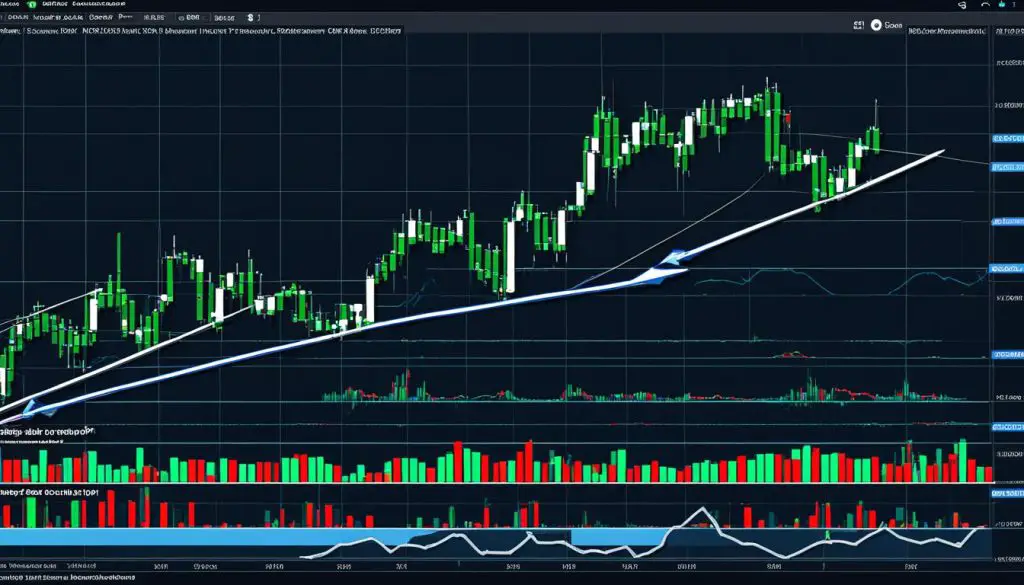For those immersed in the world of currency exchange, establishing an essential daily routine for forex traders is not merely a suggestion—it’s a necessity for success. The forex market’s continuous operation requires a meticulously crafted forex trading daily schedule to navigate its unique challenges effectively. Instituting a well-considered routine paves the way for better decision-making, ultimately contributing to a lucrative trading career.
Entrenching a forex trading daily routine transcends mere habit formation; it’s akin to the strategic operation of a high-caliber business. A trader must be ever-vigilant, synchronizing strategies with the pulse of market dynamics and forthcoming economic events while avoiding pitfalls such as over-trading and burnout. This balance ensures that traders leverage opportunities on their terms, seamlessly integrating their professional pursuits with the demands of personal life.
Establishing a Structured Forex Trading Routine
Success in the forex market hinges not just on one’s understanding of economics or strategy, but also on the establishment of a robust forex trading routine. Such a routine serves as the bedrock for decision-making processes and long-term profitability. The discipline involved in creating a successful forex trading routine equips traders to operate within the markets with precision and consistency.
The Importance of a Predefined Schedule
Committing to a predefined schedule mitigates the risks of sporadic decision-making which can undermine a trader’s results. Structuring one’s forex trading activities ensures that every action is the result of calculated, well-thought-out planning. Regimen and structure are paramount when carving out a successful career in the ever-fluctuating currency markets.
Trading as a Business: Approach and Mindset
Adopting a business-oriented mindset toward forex trading turns what may be a hobby for many into a serious endeavor. This shift in perception entails recognizing the intricate dynamics and dedicating oneself to a pursuit of professionalism, establishing clear operational procedures, and upholding unwavering discipline in each trade.
Aligning Your Trading Schedule with Market Dynamics
Forex markets are shaped by global events and traded on a 24-hour cycle. By aligning your trading routine with key market movements and liquidity, opportunities to capitalize on high-volume transactions increase. Understanding these dynamics is crucial for timing trades, therefore consistently enhancing the probability of success.
A well-defined forex trading routine is comparable to a well-oiled machine. When nurtured and followed religiously, it empowers traders to make the most of their time in front of the screen, to engage with the global economy effectively, and, most importantly, to execute trades that align closely with their strategic forecasts and risk management plans.
Mastering Time Management in Forex Trading
The crucial element of a successful daily routine for forex traders hinges on effective time management. To thwart the risks associated with reactive trading, one must embrace a proactive approach by delineating a trading schedule that resonates with their lifestyle and objectives. Below, we delve into structural forex daily routine tips designed to help traders navigate the temporal complexity of the forex market.
- Define prime trading hours aligned with market volatility and your personal availability to capitalize on peak trading opportunities.
- Segregate news reviewing and market analysis to specific times, ensuring a targeted approach to trading preparation.
- Develop checkpoints within your trading day for monitoring progress and enforcing a disciplined end to active trading.
- Establish a pre-trade ritual involving market scanning, economic calendar reviews, and mental preparedness exercises.
- Reserve time for post-trade reflection and journaling, an essential part of the feedback loop for trading improvement.
Adhering to this regimented framework, forex traders can manifest a more definitive grasp on their activities, ensuring their presence during premium market conditions and decisiveness when it comes to stepping away. By building a calculated routine around these principles, the market’s incessant noise becomes a distant concern, supplanted by the clarity and focus of a well-structured forex trading plan. The following table provides an integrated weekly planner tailored for forex traders seeking to refine their time management approach.
| Day of the Week | Market Analysis | Trade Execution | Review & Reflect |
|---|---|---|---|
| Monday | Assess weekly forex outlook and upcoming economic events | Focused on capitalizing on early market trends | Analyze trades and prepare for next day |
| Tuesday | Review overnight shifts and global market news | Apply insights to manage and enter new trades | Journal trading outcomes and reassess strategy |
| Wednesday | Mid-week analysis, gauge market sentiment | Continue strategic trade placements based on analysis | Mid-week review for adjustments in trading plan |
| Thursday | Check for policy decisions or critical economic releases | Seek high-percentage opportunities pre-release | Allocate time for longer-term strategy considerations |
| Friday | Prepare for end-of-week position adjustments | Exercise extra caution with Friday’s volatility | Perform a comprehensive week-end review |
Incorporating these structured elements into your daily routine for forex traders arms you with the organizational prowess necessary to delineate trading from personal time effectively. This comprehensive approach not only fosters enhanced market engagement but also promotes a sustainable trading life far removed from compulsive behaviors that often plague the undisciplined trader.
Forex Trading Daily Routine: Creating Consistency
Establishing a consistent forex trading daily routine is a hallmark of the most successful traders. By incorporating forex trading daily habits that revolve around in-depth research and disciplined execution, traders can improve their market engagement and strategic decision-making. These habits form the backbone of a trader’s day, ensuring that every action taken is backed by solid data and careful analysis.
Integrating a Routine Based on Research and Discipline
To forge a stable path in forex trading, one needs a routine that is both research-intensive and disciplined. This routine begins with a morning analysis of overnight market movements, followed by a review of currency news and changes in economic indicators. At the core of this process is a forex trading daily routine checklist, which may include checking for geopolitical developments, reviewing currency pair charts, updating trading journals, and pre-planning trades for the day.
The Role of News and Event Analysis in Daily Trading
Keeping abreast of global news and financial events is non-negotiable for a forex trader. The influence of geopolitical climates, central bank announcements, and economic reports on market volatility places news and event analysis at the forefront of daily trading practices. Traders must interpret how these events may affect currency strengths and weaknesses, factoring these insights into their trading strategies.
Setting Alerts through Mobile Trading Assistants
The use of mobile trading assistants has revolutionized forex trading habits by providing crucial market updates via alerts and notifications. These tools enable traders to respond quickly to market changes without the need to sit in front of a computer screen all day. Setting price alerts for key forex pairs, as well as alarm signals for upcoming economic announcements, can enhance a trader’s responsiveness and efficiency.
| Activity | Pre-Market | Market Hours | Post-Market |
|---|---|---|---|
| Research and Analysis | Economic Calendar Review | Real-time Chart Analysis | Post-Market Wrap-up |
| Trading Journal Updates | Previous Day’s Trade Reflection | Record Trades and Strategies | Plan Adjustments for the Next Day |
| Setting Alerts | Key Economic Event Alerts | Price Movement Notifications | End-of-Day Summary Alerts |
Forex trading success is deeply intertwined with daily habits and routines. Incorporating these methodologies into one’s daily workflow can offer stability amidst the market’s inherent volatility. By adhering to a robust and adaptable routine checklist, forex traders position themselves to capture opportunities and minimize risks.
Identifying High-Percentage Setups
For traders committed to a robust forex trading routine, pinpointing high-percentage setups is tantamount to seeking treasure in vast seas – it’s what separates the adept from the crowd. These setups aren’t stumbled upon by chance; they are the upshot of a staunch adherence to a forex trading daily routine checklist, leveraging a blend of technical analysis, fundamental insights, and the trader’s own sharpened intuition.
The essential components of identifying such lucrative opportunities are not only grounded in technical chart patterns but are also highly reliant on understanding the subtle nuances that drive market behavior. A trader must keenly anticipate potentially volatile market movements, steered by economic events or geopolitical shifts, ensuring they are positioned to act when the opportunity strikes.
- Staying Updated with Financial News: By keeping one’s finger on the pulse of current global financial news, the forex trader primes themselves for recognizing catalyst-driven movements.
- Technical Analysis Mastery: Dedication to learning and applying key technical indicators that can signal high-probability trades.
- Market Sentiment Gauging: Acquiring the ability to read the market sentiment, observing both retail and institutional movements.
- Continuous Education: Nurturing the craft through ongoing education, webinars, and reading, to refine tactics for identifying strong trade setups.
- Record Keeping: Diligent documentation of trades to analyze patterns that could uncover repeatable high-percentage opportunities.
Integrating these practices into one’s forex trading routine is not a one-off task but an ongoing pursuit of precision. The daily application of an evolving checklist helps the trader to draw on both analytical skills and seasoned experience, thus facilitating the intelligent discernment of high-percentage setups from the sea of potential trading scenarios.
Behavior Patterns: The Over-Trading and Under-Trading Pendulum
For individuals immersed in the intense world of forex trading, establishing a balance in their trading routine is paramount. Divergences from an essential daily routine for forex traders often result in a dangerous oscillation between over-trading and under-trading. Recognizing and addressing these tendencies is crucial for maintaining a sustainable trading career.
Understanding the Cycle of Trading Frequencies
The journey of a trader can often mirror the market’s own volatility, with periods of intense activity followed by times of reticence. This cycle attests to the psychological challenges traders face as they navigate through forex markets. A steady forex trading routine is not just about the number of trades made, but also about maintaining an equilibrium that aligns with one’s trading strategy and risk tolerance.
Key Signs of Over-Trading and Strategies to Avoid It
Over-trading manifests through an array of symptoms that forex traders should be vigilant of—excessive risk-taking, emotional decision-making, and an uncharacteristic deviation from established trading plans are but a few of these signs. The key to averting the spiral into over-trading lies within disciplined practices and self-awareness. Strategies like predetermined trading limits and strict adherence to risk management rules are crucial.
To elucidate these concepts further, let’s consider a comparative table that outlines behaviors and remedial strategies concerning over-trading:
| Behavior Indicators of Over-Trading | Preventative Strategies |
|---|---|
| Increase in trade frequency beyond typical levels | Limit daily or weekly trade count |
| Escalated risk exposure disproportionate to the trading plan | Enforce strict stop-loss orders and risk-reward ratios |
| Marked surge in emotional responses to market shifts | Develop a mindfulness routine to help manage emotional stress |
| Decisions based on an urge to compensate for losses | Apply a cooling-off period after losses to avoid impulsive decisions |
| Frequent trading during unscheduled hours or low volatility periods | Schedule trading hours that align with personal circadian rhythms and market activity peaks |
| Neglect of thorough market analysis before entering trades | Reaffirm commitment to pre-trade analysis and review processes |
Embracing these strategies can help mitigate the risks associated with over-trading, ensuring that traders maintain a balanced and effective forex trading routine. The essential daily routine for forex traders should be grounded in analytics, guided by strategy, and tempered by disciplined execution.
Adapting the Trader’s Lifestyle for Enhanced Performance
For a forex trader, achieving success is not solely dependent on mastering the financial markets; it also hinges on fostering a lifestyle that promotes optimal functioning both physically and mentally. Implementing a forex trading daily routine that enhances overall well-being is critical. It is about far more than the mechanics of trading; it’s about cultivating a disciplined and balanced life that helps you maintain focus and make better trading decisions.
The Impact of Well-Being on Trading Success
A trader’s well-being has a direct influence on their ability to perform in the fast-paced forex market. Aspects such as sufficient sleep, balanced nutrition, and mental health are not just beneficial for personal health, but also for the cognitive sharpness needed in trading. Developing a daily routine for forex traders that prioritizes these elements can provide the stability and clarity needed to manage the stresses of the market.
Discipline and Self-Control: Tips from Experienced Traders
Seasoned traders often attribute their longevity in the market to strict discipline and self-control. The consistency required to execute a well-thought-out trading plan can be bolstered through a structured daily routine. Meditation, regular exercise, and setting strict trading hours are all tactics that can aid in maintaining focus and avoiding the pitfalls of emotional trading.
Optimizing Your Physical and Digital Trading Environment
The environment in which one trades can significantly affect performance. A clutter-free desk, comfortable seating, and a distraction-free digital setup are essential for maintaining focus. Ensuring your trading space is conducive to productivity through organization and efficient design can help in executing a successful forex trading daily routine.
Below is a table that outlines key components for optimizing a trader’s daily environment for enhanced performance:
| Aspect | Benefit | Recommendation |
|---|---|---|
| Physical Workspace | Reduces distractions, increases efficiency | Keep a clean desk, organize trading tools, ensure good lighting |
| Digital Setup | Streamlines processes, improves focus | Use multiple monitors, keep software updated, organize digital files |
| Mental Well-being | Enhances decision-making capabilities | Practice mindfulness, take breaks, engage in recreational activities |
| Physical Health | Increases stamina, reduces stress | Adhere to a sleep schedule, eat a well-balanced diet, exercise regularly |
By taking actionable steps to enhance these areas of a trader’s lifestyle, the pursuit of trading excellence can be a more balanced and sustainable endeavor, positioning the trader for long-term success in the forex realm.
Conclusion
The realm of forex trading is vast and complex, marked by an ongoing quest for mastery and refinement. The pathway to excelling within this dynamic field is paved with dedicated self-improvement, a concept critical to both the novice and the seasoned trader. A robust forex trading routine, supported by disciplined forex trading daily habits, is not merely a strategy—it’s a commitment to continuous learning and evolution.
The Continuous Road to Self-Improvement in Forex Trading
For traders, the climb towards proficiency never truly ceases. It demands a lifelong dedication to enriching one’s skills and knowledge. As the markets fluctuate and economies shift, so must the trader, adapting through a relentless pursuit of education and self-awareness. This path of advancement is cultivated not through isolated victories, but through a steady accumulation of experiences, analyses, and the meticulous documentation within trading journals—key components that feed into a trader’s growth and success.
Harnessing Healthy Habits for Sustainable Trading Practices
Alongside the intellectual demands of forex trading, the physical and emotional stakes are just as pivotal. Balancing risk management with mental resilience, traders must foster habits that mitigate stress while promoting well-being, ensuring longevity in a field that is as mentally tasking as it is financially taxing. Such a holistic approach—a synergy of strategy, psychology, and health—cements a foundation for sustainable practice, equipping traders with the fortitude to endure and thrive in the face of an ever-changing financial landscape.
FAQ
An essential daily routine for forex traders includes a disciplined schedule for analyzing markets, trading during optimal hours, implementing risk management strategies, and staying informed on global economic events. It also encompasses personal well-being with adequate rest, nutrition, and regular breaks to sustain performance.
Establish a structured forex trading routine by setting a predefined schedule that aligns with market dynamics, treating trading as a business with a professional approach and mindset, and adhering to a strategic plan to avoid over-trading and burnout.
Consistency in a forex trading daily routine can be achieved by conducting thorough research, maintaining discipline in analyzing markets, leveraging news and event analysis, and using mobile trading assistants and alerts to stay informed on market changes without constant monitoring.






